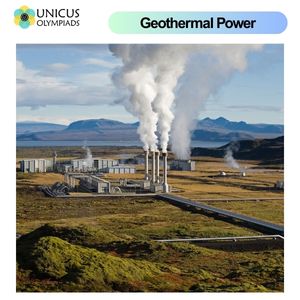

Geothermal power is a renewable energy source that harnesses the Earth's internal heat to generate electricity or provide direct heating. Unlike solar or wind energy, which depend on external factors like sunlight or wind, geothermal energy is constant and can be accessed at any time. This makes it a reliable and sustainable energy source. However, the suitability of geothermal power depends on various factors, such as geographic location, geological conditions, and resource availability. In this article, we will explore where geothermal power is most suitable, why it works best in certain regions, and provide examples for better understanding.
Geothermal energy is generated by harnessing heat from the Earth’s interior. The Earth's core generates massive amounts of heat, which is transferred through the crust to reservoirs of hot water and steam located beneath the surface. This steam or hot water is extracted and used to drive turbines connected to generators, producing electricity. In some cases, geothermal energy is also used directly for heating buildings, agricultural applications, or industrial processes. There are two main types of geothermal power plants:

Geothermal power is most suitable in regions where the Earth’s heat is closer to the surface. These areas typically have significant volcanic, tectonic, or geothermal activity, where magma is nearer to the Earth's crust. This allows for the natural presence of hot springs, geysers, or other geothermal features that indicate the availability of geothermal energy. Geothermal resources are most abundant in regions along tectonic plate boundaries or volcanic hotspots. Below are some key regions where geothermal power is particularly suitable:
Tectonic plate boundaries are areas where the Earth’s crust is active and dynamic, often associated with volcanic activity, earthquakes, and geothermal features like geysers and hot springs. These regions are often ideal for geothermal power generation, as the heat from the Earth’s interior can easily reach the surface. Plate boundaries create the geological conditions that allow geothermal energy to be efficiently accessed.
Volcanic hotspots are regions where magma from the Earth's mantle rises to the surface, creating volcanic activity. These areas often have geothermal features like hot springs and volcanic eruptions. Geothermal plants are particularly efficient in these areas because the Earth's internal heat is concentrated and readily available. Volcanic regions are often located away from tectonic plate boundaries but still have significant geothermal potential due to the increased heat flow from below the Earth's surface.
Some regions that are not necessarily on tectonic plate boundaries or volcanic hotspots still have active geothermal features, making them suitable for geothermal power generation. These regions may have existing geothermal resources such as hot springs or geysers that indicate underlying heat sources. In these areas, the geothermal gradient (the rate at which temperature increases with depth) is sufficient to tap into the Earth’s heat for energy production.
The suitability of geothermal power in these regions is driven by the geothermal gradient—the difference in temperature between the Earth’s surface and the Earth’s interior. In areas where the Earth’s crust is thin, heat from the Earth’s interior can easily rise to the surface, creating accessible geothermal resources. Additionally, regions with volcanic activity or tectonic movement are more likely to have high-pressure steam reservoirs beneath the Earth’s surface, which can be harnessed for power generation. Let’s explore why certain regions are more suitable for geothermal power generation:
Regions with a high geothermal gradient, where the temperature increases rapidly with depth, are ideal for geothermal energy production. These areas are typically located near tectonic plate boundaries or volcanic hotspots, where magma is closer to the surface, providing an abundant heat source.
Geothermal features such as hot springs, geysers, and fumaroles are indicators that heat from the Earth’s interior is close to the surface. These features are often found in geothermal hotspots and plate boundaries, providing accessible energy sources for geothermal power plants.
Geothermal energy is growing as a reliable and sustainable source of power, with numerous countries tapping into their geothermal resources. It is particularly valuable for countries seeking to reduce their reliance on fossil fuels and mitigate climate change. Geothermal energy offers a clean, renewable alternative to coal and natural gas, with significantly lower carbon emissions and a smaller environmental footprint.
Some countries have made significant progress in harnessing geothermal energy, both for electricity generation and direct heating applications:
Geothermal energy has great potential for growth worldwide, particularly in countries with significant geothermal resources. As technology advances, it is expected that more regions will be able to tap into these resources, and geothermal power plants will become more efficient and cost-effective. New exploration methods, such as enhanced geothermal systems (EGS), are being developed to access deeper geothermal resources that were previously inaccessible.